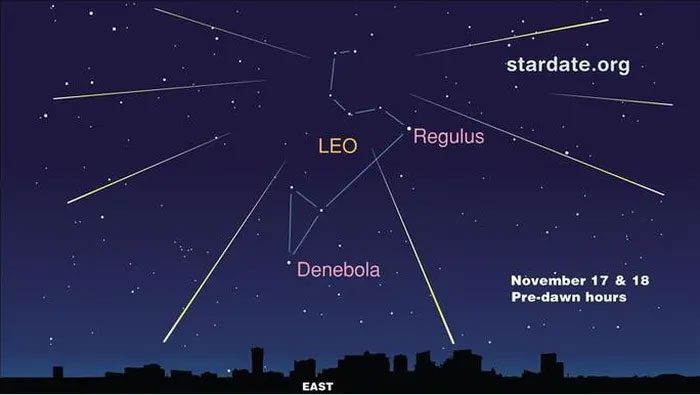From the constellation of Leo, the Leonids meteor shower will peak on the night of November 18 and into the early morning of November 19, as observed from Vietnam.
This meteor shower is named Leonids because it appears to radiate from the constellation Leo, which is known by its Latin name “Leo”.
According to data from Ho Chi Minh City using tools from Date and Time, during the peak night, the “celestial lion” will emit about 10 meteors per hour. The best time for observation will be after midnight.
Meanwhile, EarthSky predicts that there will be 10-15 meteors per hour during this peak night.

The Leonids meteor shower will radiate from the head of the “celestial lion”, which is the constellation Leo – (Image: SPACE).
However, since meteor showers can last several days and the variation in the number of meteors on any given night is not significant, you can choose a suitable time frame with good weather for observation.
The Leonids meteor shower has been occurring since November 6 and will continue until November 30, but the number of meteors falling during this period will vary: it will gradually intensify before tapering off after the peak night.
Although it appears to emanate from the head of the lion formed by the constellation Leo, this meteor shower actually originates from the Tempel-Tuttle comet.
The Tempel-Tuttle comet has a 33-year orbit around the Sun; however, our Earth passes through its long-lasting trail of dust and debris each November, leading to the Leonids meteor shower.
The Leonids meteor shower is usually small, but it can sometimes produce a “meteor storm.” The most recent recorded Leonids meteor storm occurred in 1966, with thousands of meteors per minute during the peak night.
Leonids meteor storms are believed to recur every 33-34 years depending on the comet’s orbit, but the meteor shower in 2000 was disappointing compared to expectations, being dense yet far less impressive than the 1966 meteor storm.


















































